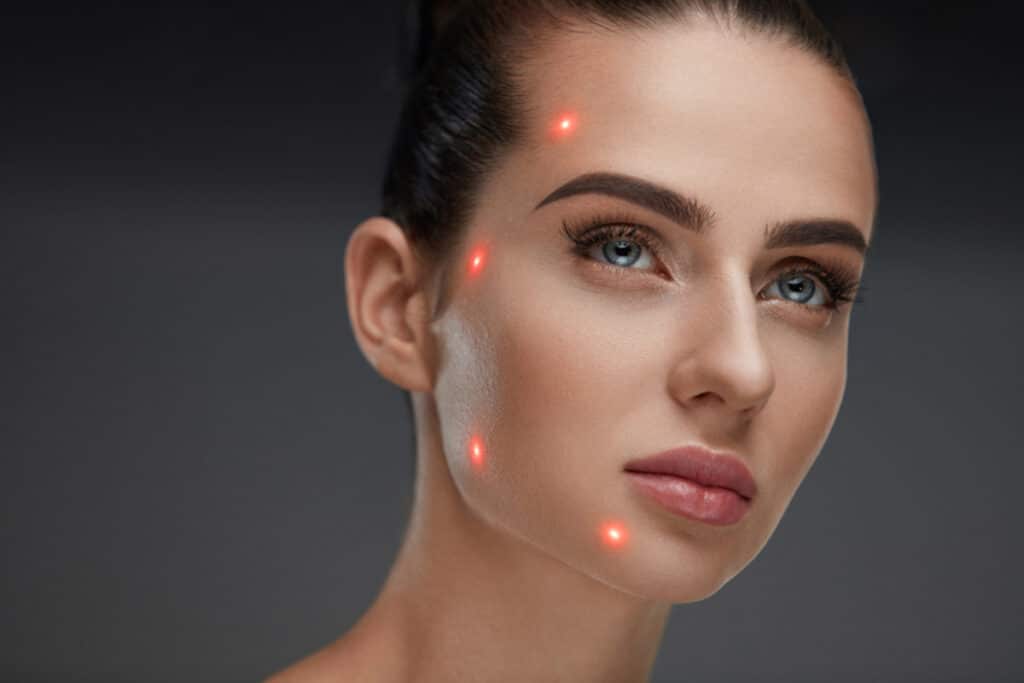Laser skin resurfacing is a popular cosmetic procedure that can rejuvenate and enhance the appearance of the skin. By using laser technology, this treatment targets various skin concerns, such as wrinkles, fine lines, acne scars, sun damage, and uneven skin tone. However, with several types of laser skin resurfacing available, it can be overwhelming to choose the best therapy option for your specific needs. This article aims to provide a comprehensive guide to help you make an informed decision.

Understanding Laser Skin Resurfacing
Laser skin resurfacing is a popular cosmetic procedure that aims to rejuvenate the skin and improve its overall appearance. This non-surgical treatment utilizes advanced laser technology to target specific skin concerns and stimulate the body’s natural healing process.
The Science Behind Laser Skin Resurfacing
Laser skin resurfacing works by directing concentrated beams of light onto the skin’s surface. These laser beams create controlled injuries, removing damaged outer skin layers and stimulating collagen production. Collagen is a protein that gives the skin its structure and elasticity. By promoting collagen synthesis, laser skin resurfacing helps to improve skin texture, minimize wrinkles, and reduce the appearance of scars.
During the procedure, the laser energy is absorbed by the skin, causing the targeted area to heat up. This controlled thermal injury prompts the body to produce new collagen, which gradually replaces the damaged skin cells. The result is smoother, firmer, and more youthful-looking skin.
Benefits of Laser Skin Resurfacing
One of the main benefits of laser skin resurfacing is its versatility. It can effectively address various skin concerns, including age spots, fine lines, and wrinkles. Additionally, laser therapy can improve skin tone and texture, resulting in a more youthful and radiant complexion.
Unlike traditional surgical procedures, laser skin resurfacing is a minimally invasive treatment option. It does not require incisions or sutures, reducing the risk of complications and minimizing downtime. Most patients can resume their normal activities shortly after the procedure, although some redness and swelling may be present for a few days.
Another advantage of laser skin resurfacing is its ability to target specific areas of concern. The laser can be adjusted to deliver different levels of energy, allowing for precise treatment of individual wrinkles, scars, or pigmentation issues. This customization ensures that each patient receives a tailored treatment plan that addresses their unique needs.
In addition to its cosmetic benefits, laser skin resurfacing can also have a positive impact on a person’s self-confidence and overall well-being. By improving the appearance of the skin, individuals may feel more comfortable and confident in their own skin, leading to a boost in self-esteem.
It is important to note that laser skin resurfacing is not suitable for everyone. Individuals with certain medical conditions, such as active acne or skin infections, may not be suitable candidates for this procedure. It is always recommended to consult with a qualified dermatologist or plastic surgeon to determine if laser skin resurfacing is the right treatment option for you.
In conclusion, laser skin resurfacing is a highly effective and versatile cosmetic procedure that can help improve the appearance of the skin. By utilizing advanced laser technology, this treatment stimulates collagen production and promotes skin rejuvenation. With its numerous benefits and minimal downtime, laser skin resurfacing has become a popular choice for individuals looking to achieve a more youthful and radiant complexion.
Different Types of Laser Skin Resurfacing
Laser skin resurfacing is a popular cosmetic procedure that helps improve the appearance of the skin by reducing wrinkles, scars, and other skin imperfections. There are several different types of laser skin resurfacing techniques available, each with its own unique benefits and considerations.
Ablative Lasers
Ablative lasers are among the earliest forms of laser skin resurfacing. This technique involves removing the outer layer of skin, known as the epidermis, to stimulate collagen remodeling. Ablative lasers are highly effective in treating deep wrinkles and severe acne scars. By removing the damaged skin, ablative lasers encourage the growth of new, healthier skin cells. However, it’s important to note that ablative lasers generally require longer recovery time compared to non-ablative lasers.
During the procedure, a high-energy laser beam is directed at the targeted area of the skin. The laser vaporizes the outer layer of skin, which triggers the body’s natural healing response. Over time, new skin forms, resulting in a smoother and more youthful appearance. Ablative lasers can also help improve skin tone and texture.
Non-Ablative Lasers
Non-ablative lasers work by heating the underlying skin layers without removing the outer skin. This type of laser therapy is less invasive and has a shorter recovery time compared to ablative lasers. Non-ablative laser skin resurfacing is suitable for milder skin concerns, such as fine lines, sun damage, and mild acne scars.
During the procedure, the laser targets the deeper layers of the skin, stimulating collagen production and promoting skin tightening. The heat generated by the laser also helps to destroy bacteria that can cause acne. While non-ablative lasers may require multiple sessions to achieve desired results, they offer a gentler approach to skin rejuvenation.
One of the advantages of non-ablative lasers is that they can be used on all skin types, including darker skin tones. The procedure is generally well-tolerated, with minimal discomfort and downtime. However, it’s important to note that the results may not be as dramatic as those achieved with ablative lasers.
Fractional Lasers
Fractional lasers combine the benefits of both ablative and non-ablative lasers. These lasers create tiny treatment zones on the skin, leaving surrounding areas untouched. By targeting only a fraction of the skin, fractional laser therapy promotes faster healing and reduces the risk of complications.
During the procedure, the laser delivers precise columns of energy to the skin, creating micro-injuries. This stimulates the body’s natural healing process and triggers collagen production. Fractional lasers are effective in treating various skin concerns, including wrinkles, scars, and uneven texture.
One of the advantages of fractional lasers is that they can be customized to meet the specific needs of each patient. The intensity and depth of the treatment can be adjusted to target different skin concerns. Fractional laser therapy is also suitable for all skin types and can be used on both the face and body.
After the procedure, patients may experience redness, swelling, and mild discomfort, which usually subside within a few days. The recovery time for fractional laser resurfacing is generally shorter compared to ablative lasers.
In conclusion, laser skin resurfacing offers a range of options for individuals looking to improve the appearance of their skin. Whether you opt for ablative, non-ablative, or fractional lasers, it’s important to consult with a qualified dermatologist or plastic surgeon to determine the most suitable treatment for your specific concerns and goals.
Factors to Consider When Choosing a Laser Therapy Option
Your Skin Type and Condition
Before deciding on a laser therapy option, it is important to consider your skin type and specific skin concerns. Certain skin types, such as darker skin tones, may be more prone to pigmentation issues with certain laser treatments. Consulting with a qualified dermatologist or aesthetician can help determine the most suitable laser therapy for your skin type and condition.
Desired Results and Expectations
Clearly communicate your desired results and expectations to the healthcare professional. Different laser therapies have varying degrees of intensity and outcomes. Discussing your goals will allow the specialist to customize the treatment to meet your specific needs.
Recovery Time and Side Effects
Consider the recovery time and potential side effects associated with each laser therapy option. Ablative lasers generally require a longer healing period and can cause more noticeable redness and peeling. Non-ablative and fractional lasers usually have minimal downtime and fewer side effects. It is crucial to understand the potential risks and benefits of each treatment before making a decision.
Preparing for Laser Skin Resurfacing
Consultation and Evaluation
Prior to undergoing laser skin resurfacing, schedule a consultation with a qualified healthcare professional. During this appointment, the specialist will evaluate your skin condition, discuss your goals, and answer any questions or concerns you may have. They may also provide pre-treatment instructions to maximize the effectiveness and safety of the procedure.
Pre-Treatment Care
Follow any pre-treatment care instructions provided by the healthcare professional. This might include avoiding direct sun exposure, discontinuing certain skincare products, and preparing the skin by cleansing and moisturizing it properly. Adhering to these guidelines will help optimize the results of your laser therapy.
What to Expect During and After the Procedure
The Laser Skin Resurfacing Procedure
During the laser skin resurfacing procedure, you will be given protective eyewear to shield your eyes from the laser beams. The healthcare professional will use the selected laser device to treat the targeted areas of the skin. The duration of the treatment will depend on the size and condition of the treated area. Some discomfort and a warming sensation can be expected during the procedure, but topical anesthesia or cooling methods are often used to minimize discomfort.
Post-Treatment Care and Recovery
After the laser therapy, your skin will be sensitive, and you may experience redness, swelling, and some peeling. Following the healthcare professional’s post-treatment care instructions is vital for proper healing. This typically includes keeping the treated area clean, moisturized, and protected from sun exposure. It is essential to avoid picking at any scabs or applying makeup until the skin has fully healed.
Choosing the best laser therapy option for your skin resurfacing needs requires careful consideration of various factors. By understanding the science, benefits, and different types of laser skin resurfacing, you can make an informed decision. Consulting with a reputable healthcare professional will ensure that your treatment is tailored to your specific skin type, concerns, and desired outcomes. Following proper pre and post-treatment care will promote optimal results and a successful recovery. With the advancements in laser technology, achieving smoother, more youthful-looking skin has never been more attainable.

If you are exploring options for laser skin resurfacing New Jersey or other skin rejuvenation treatments, consulting with a board-certified dermatologist like Dr. Joanna Kam is crucial. An expert in the field, Dr. Kam can guide you through the entire process, from the initial consultation to post-treatment care. She will closely monitor your recovery and ensure that the results align with your aesthetic goals. With her proficiency, you can attain the refreshed and youthful skin appearance you seek. Reach out to Dr. Kam today to begin your journey toward transformative skin care and enhance your self-confidence for the future.
